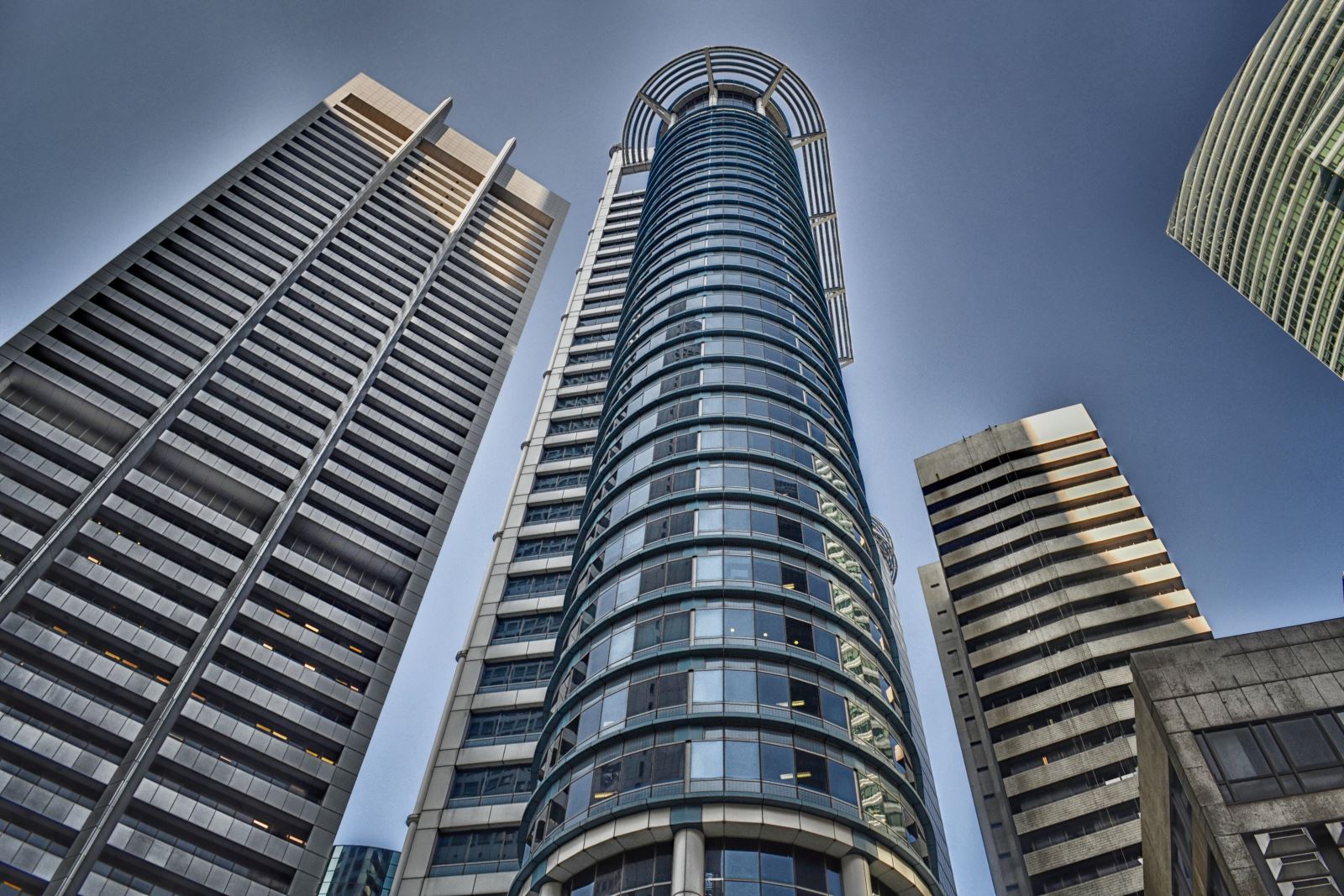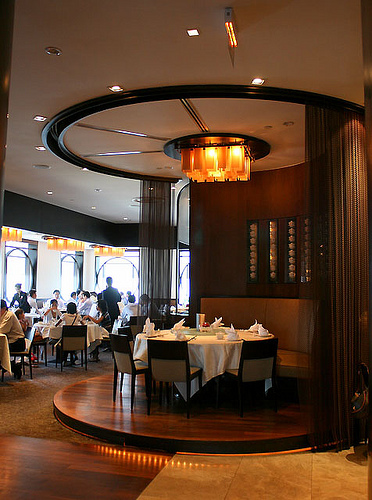UOB Plaza Two is the shorter and older building with construction completed in 1973 and later renovated in 1995 with a similar facade as UOB Plaza One. Both buildings are connected by a 45 m (148 ft) podiumsupported by four columns. The podium houses the banking hall of the United Overseas Bank's main branch. The building was opened by then Senior Minister Lee Kuan Yew in 1995 which is 60 years after United Overseas Bank's founding.

The towers have an octagonal base and consists of rotated cubic volumes, which is a distinctive stylistic expression of Kenzo Tange's works in the 1990s. The cubic volumes on the octagonal base, they rotate on a 45 degree plane of reference and diminish in volume towards the top of UOB Plaza One. A six-storey podium links the two buildings together and skillfully accommodates the reconstructed UOB Building (now UOB Plaza 2). This place is a large airy atriumlinking Raffles Place to Singapore River without entering the building. The banking hall has full height glass walls to see through the Singapore River from the financial district. The change in lighting brings out the geometric qualities of the building's architecture, highlighting the buildings with shafts of light and shadow. The external curtain wall system of the building represents a significant and innovative contribution of the evolution of building facades over time.

The "performance wall" envelope of the towers is a composite of white and grey granite and insulated grey glass units. The atrium is also known as a "city room" and above it has a large office space and a large skylight, which gives the place natural lighting. A double storey sky lobby could be found on the 37th and 38th floors, which provide panoramic views of the city. It is also used for workers to transfer lifts from the lower floors to the higher floors. However, the sky lobby has been closed to the public due to security reasons after the September 11, 2001 attacks. There are two sculptures on the ground floor; Homage To Newton by Salvador Dalí in the city room, and another designed by Fernando Botero.















